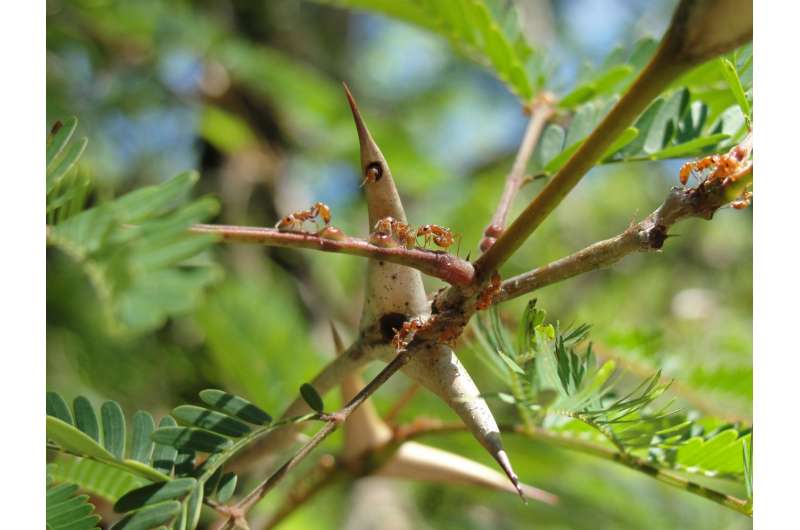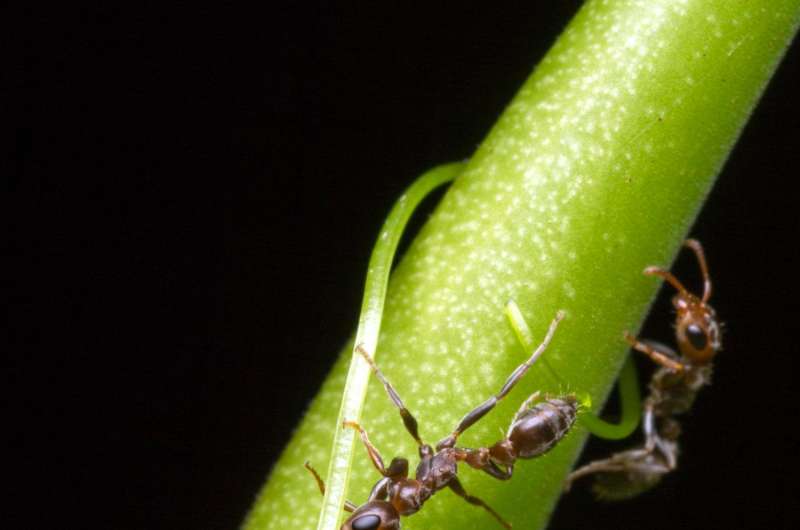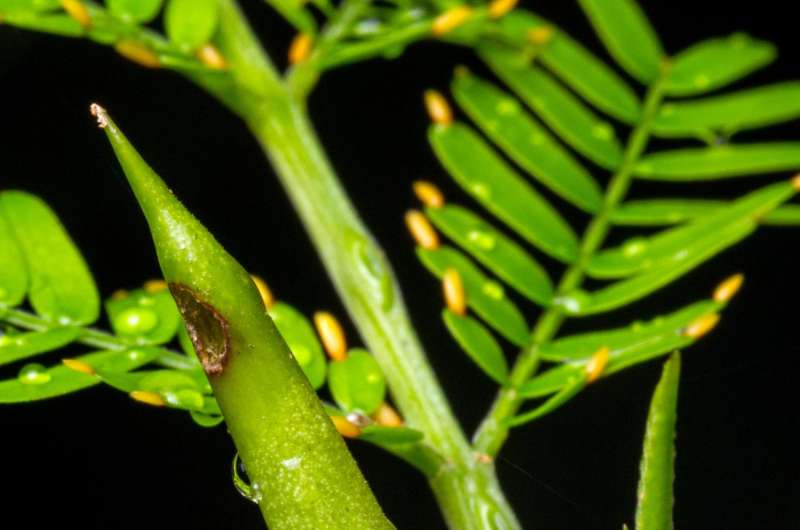Study challenges long-standing scientific theory: Ant genomics declare 'checkmate' to red king theory

In Lewis Carroll's "Through the Looking-Glass," the Red Queen explains to Alice how a race works in Wonderland, stating, "Now, here, you see, it takes all the running you can do, to keep in the same place." So, too, does this statement hold true in nature. Competitive species are under constant pressure to evolve as rapidly as possible so as to outgun their competition, and this is often referred to as the Red Queen Theory. The rabbit needs to outrun the fox to avoid being killed, whereas the fox needs to catch the rabbit in order to avoid starvation. Well, statistical modeling has also suggested the inverse since 2003: the Red King Theory. If two species are mutualists—that is, each benefits from the activity of the other—they should evolve at a slower rate, so as to avoid interrupting their partnership. Makes sense, right? Think again! In a new study published in Nature Communications, comparative genomic analysis shows that the complete opposite may actually be true.
"We originally set out to uncover the genetic basis of mutualistic behavior in ants," said Dr. Benjamin Rubin, recent PhD graduate from University of Chicago and The Field Museum and now postdoctoral researcher at Princeton University. "So, we sequenced the genomes of three mutualistic species of plant-ants and four of their closely-related, non-mutualistic relatives. We were surprised to learn that the mutualists actually had a higher rate of evolution across their genomes than the generalists."
Specifically, the genes that are under significant pressure are those attributed to neurogenesis and muscle activity—exactly what you might expect to see. Neurogenic genes are tied to behavior, while muscle activation genes likely help the ants protect their host plants through increased activity and speed.
This study is in surprising contrast to the Red King Theory, which has been supported by the scientific community over the past decade. However, since 2003, numerous advances have been made in the field of scientific technology. While whole-genome sequencing used to take teams of scientists years to perform, the process can now be completed in a few, short days by teams of just a couple of researchers. These advances have enabled scientists to re-examine theories like this one and provide evidence that supports or contradicts their original conclusions.

So, why do mutualists have a higher rate of evolution than their generalist counterparts? Although the question warrants further study, Field Museum Curator and Professor Dr. Corrie Moreau has an initial explanation:
"Just like all organisms, mutualists need to constantly adapt to their environments to ensure survival. However, they also have the additional task of evolving in relation to one another. Many species flip between mutualism and parasitism over time. Even mutualism is a costly relationship that evolution will select against if it is no longer advantageous. All of this likely factors into the accelerated rate of evolution among these species."
Yet, there are still many questions about the evolution of DNA and genomes. What are all the factors that contribute to this increased rate of evolution among mutualists? What does genetic adaptation look like in other symbiotic relationships? Although we don't have all the answers yet, this study provides an important framework to begin a new line of questioning.
What is clear, however, is that this research has moved its piece on the chessboard of science, stared down the Red King Theory, and confidently declared, "Checkmate."

More information: Rubin, B. E. R. & Moreau, C. S. (2016). Comparative genomics reveals convergent rates of evolution in ant-plant mutualisms. Nature Communications. DOI: 10.1038/NCOMMS12679
Journal information: Nature Communications
Provided by Field Museum



















